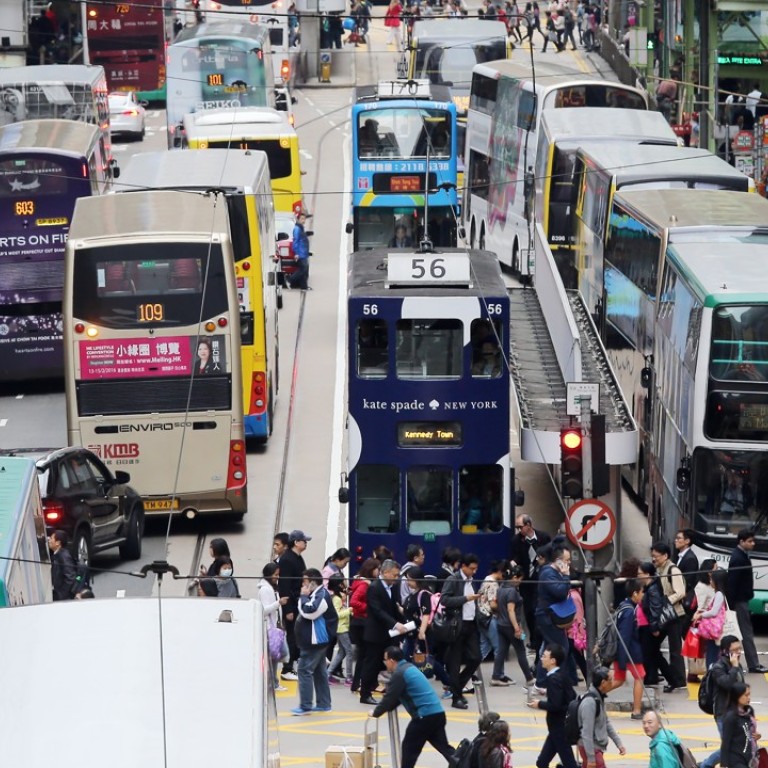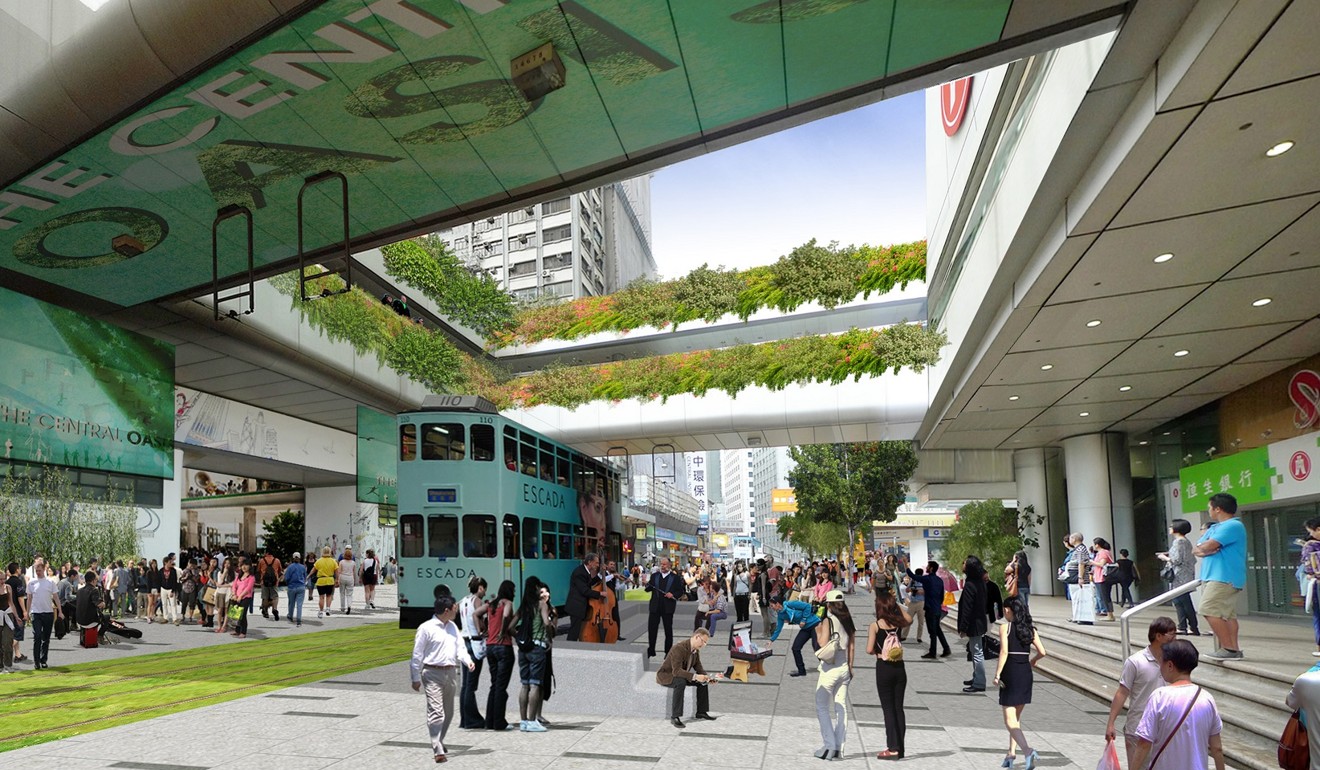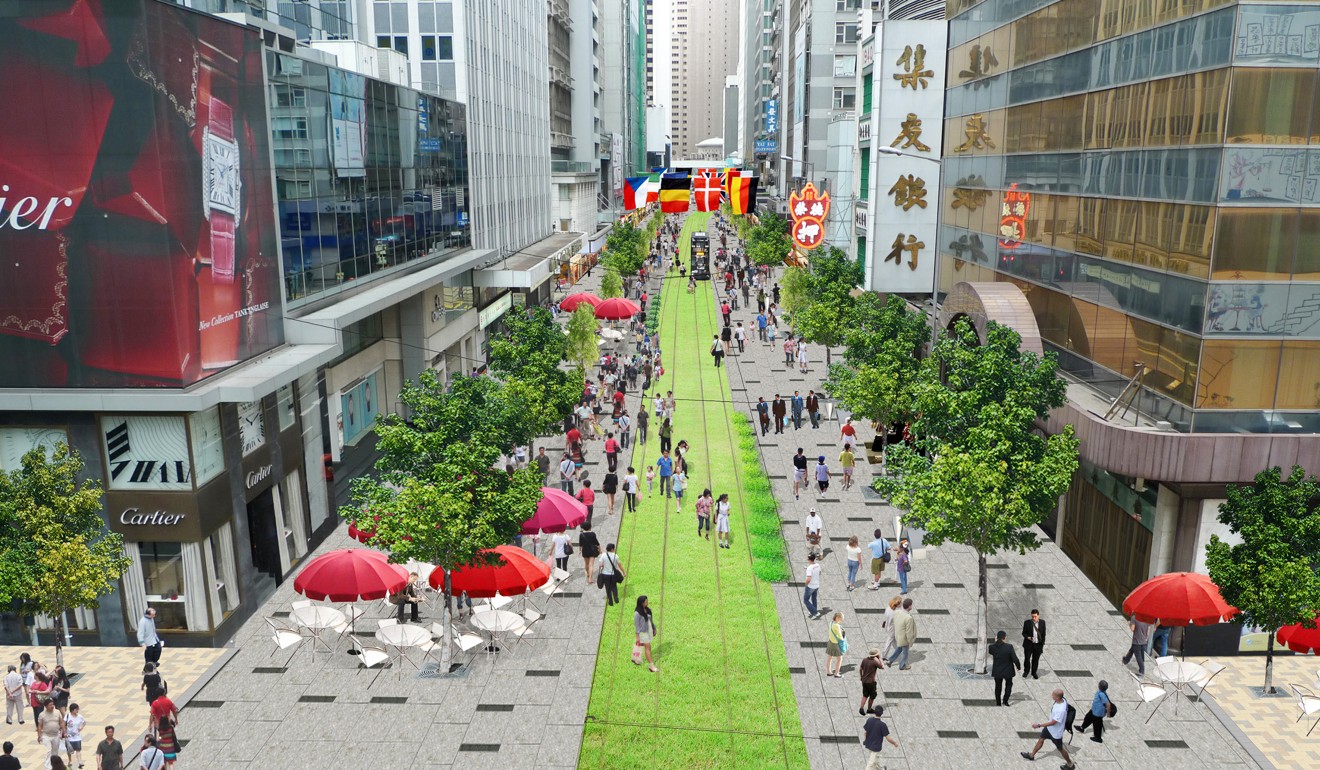
Chasing space: boost for plan to bar cars and buses in Central, Hong Kong
Plans to pedestrianise the business district have been afoot for years, but could get back on the agenda with the setting-up of a new charity to push for it
Anyone who has walked through Hong Kong’s Central district and longed for a quieter experience with cleaner air may be closer to getting their wish.
A new blueprint, on the way this year, will include a study on how traffic there can be managed if no cars or buses are allowed on part of Des Voeux Road Central, as well as smaller initiatives that could pave the way for a full roll-out.

Markus Shaw, who chairs the group’s board, said it needed high-level policymakers on board to move past department-level bureaucracy.
“Real estate owners want to see it happen, the tram company wants to see it happen, the retailers want to see it happen and even the bus companies ... are quite neutral as they realise it would ease congestion,” he said.
The retailers want to see it happen and even the bus companies ... are quite neutral
“The more technical information we can give [the government], the more likely it is to happen.”
The group is now in the process of being registered as a charity. Because of companies’ rules on donations, that would help it seek the HK$2.5 million it needs for street-level improvements, community planning, research, and outreach to schools and universities.
One important step – expected to cost HK$1.5 million – will be a study to prove the plan would work, Shaw said.
The group is discussing with the Transport Department a proposal to turn a section of Des Voeux Road, from Hillier Street to Morrison Street, car- and bus-free on certain weekends or public holidays.
Shaw pointed out that other cities around the world had similarly pedestrianised, and he said it had worked. Examples include Vienna’s Mariahilfer Strasse, Shanghai’s Nanjing Road and London’s Oxford Street.
“Even Singapore is looking at plans to fully pedestrianise Orchard Road,” Shaw said, referring to one of the city state’s main thoroughfares. “These streets are magnets for tourists and can generate huge economic benefits.”
Ride-hailing start-up Grab wants to solve traffic problems with helicopters
The idea of taking cars off streets in Central first came about 17 years ago, but fizzled out. It was revived in 2014 in a joint study by the Institute of Planners, City University, the Civic Exchange think tank and the transport and planning consultancy MVA Hong Kong.
More than HK$7 million has since been invested in the idea, which proponents say will clean up heavily crowded and polluted roadways and make it more pleasant and safe.

“Walking is convenient in Hong Kong but it’s very unpleasant. This should not just be about walkability but strollability too,” Shaw said.
A Transport Department spokesman said any pedestrianisation plan would have to balance benefits to trams and pedestrians with the needs of commuters and the transport industry as well as the impact on nearby buildings and residents.
He said the department was aware of the group’s planned traffic impact assessment and would offer advice when it receives the report.

